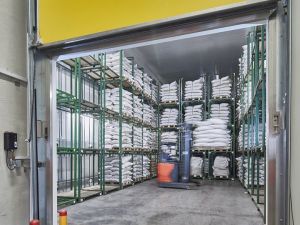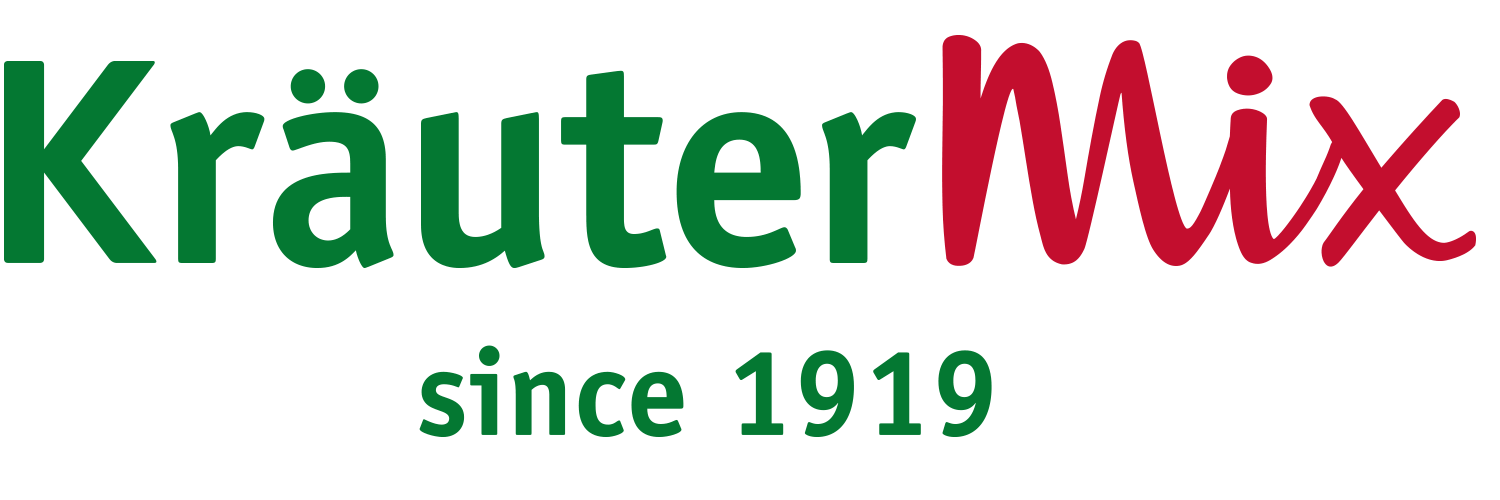Secure protection against pests
As dried natural products, plant-based raw materials are susceptible to pests, despite high hygiene and safety standards. These products undergo a protective inventory treatment in order to ensure their quality and integrity, making sure there is no breeding ground for harmful insects such as beetles, moths and lice or their larvae and eggs.
Two treatment choices for inventory preservation
Kräuter Mix uses two different methods: a hydrogen phosphide (phosphine, PH3) treatment and a carbon dioxide (CO2) pressure treatment. As a rule, incoming goods immediately undergo protective treatment.
Valuable experience for product-specific treatment
How goods are treated depends on the product, its properties and the type of packaging. The decision is based on Kräuter Mix’s decades of experience in the field of protective product treatment. Raw materials that are susceptible to pest infestations or classified as at risk, such as dried vegetables and mushrooms, are stored separately and quarantined before treatment. Another susceptible product group is medicinal herbs, which generally undergo protective treatment on arrival at a company location.

One of the most effective methods for combatting pest infestations in inventory is to treat the plant-based raw materials with hydrogen phosphide. Kräuter Mix has one of the most state-of-the-art PH3 treatment chambers worldwide: an in-house development designed as a large-volume protective inventory treatment chamber with space for 540 pallets. Over the course of around four days, the fumigant is diffused through the chamber, permeating the containers and goods. The high penetrative potency of the gas reliably kills pests at all stages of development. No residue remains on the products after the PH3 treatment and the subsequent waiting period. Nor are product quality or sensory properties such as taste, appearance or smell affected by the process.
CO2 pressure treatment to protect products
Kräuter Mix’s protective inventory treatment facility, which uses environmentally friendly CO2 recovery and recycling, is state of the art, having been upgraded from the original double to a triple-chamber system. The three pressure autoclaves, which regulate the CO2 pressure equalization, play a fundamental role in Kräuter Mix’s inventory management. As a general rule, the relevant goods are exposed to CO2 at a maximum pressure of 20 bar in the autoclave for some three hours. The subsequent rapid reduction in pressure results in an enormous pressure difference that kills off any pests in the product.
This method maintains the quality and structure of the goods while leaving no CO2 residues in the natural products. As such, the process is also approved for the treatment of raw materials from controlled organic cultivation in compliance with the product specifications set out in Regulation (EU) 848/2018 for pest control in organic and environmentally friendly production. The CO2 treatment facility is also GMP-certified and ensures the highest hygiene and safety standards for both pharmaceutical and plant-based active ingredients. Once treated, goods can be processed directly or forwarded.
Constant inventory monitoring
The goods stored in the warehouses are continuously monitored and temperature and humidity recorded – a further vital component of inventory preservation at Kräuter Mix. Special UV lamps, insect screens as well as glue and pheromone traps ensure the plant-based raw materials are continuously monitored and protected while in the warehouse.
Protective inventory treatments at Kräuter Mix
In terms of efficacy, both protective treatment methods are equally valuable at Kräuter Mix, although the processes operate on different principles. Both treatment methods are approved by the German Federal Office of Consumer Protection and Food Safety in accordance with the publication “Pflanzenschutzmittel-Verzeichnis Teil 5, Vorratsschutz” (in the currently applicable version) and are also available under contract for third-party projects.
PH3 treatment
Over a period of about four days, phosphine permeates the packed goods in a large chamber facility operated by a toxicology team. Following the treatment and a subsequent waiting period, no phosphine residue remains. Throughout the entire treatment period, the process itself and the temperature required for the raw material are monitored electronically. An automated guided vehicle (AGV) system ensures fully automated loading and emptying of the PH3 chamber and frees employees for other tasks. Consequently, Kräuter Mix is able to use the chamber around the clock.

CO2 pressure treatment and recovery
The goods are exposed to a high pressure of 20 bar for around three hours in a pressure autoclave that adds CO2. The displacement of atmospheric oxygen leads to hyperacidity of the cells of any potential insect pests. The subsequent rapid pressure release causes carbon dioxide to form, not unlike with decompression sickness, and the pests die.
For environmental reasons, CO2 is transferred from one chamber to the next in the three-chamber system to build up pressure, creating an efficient reuse cycle. Pressure equalization with the recovery tank builds up a pressure of about 17 bar, and the remaining 3 bar are supplied as fresh CO2. CO2 saturation is measured continuously to ensure high efficacy. While the pressure is equalized in two filled chambers, the other is ventilated.

More information (process description) on the stock protection treatment of Kräuter Mix in our info flyer.








